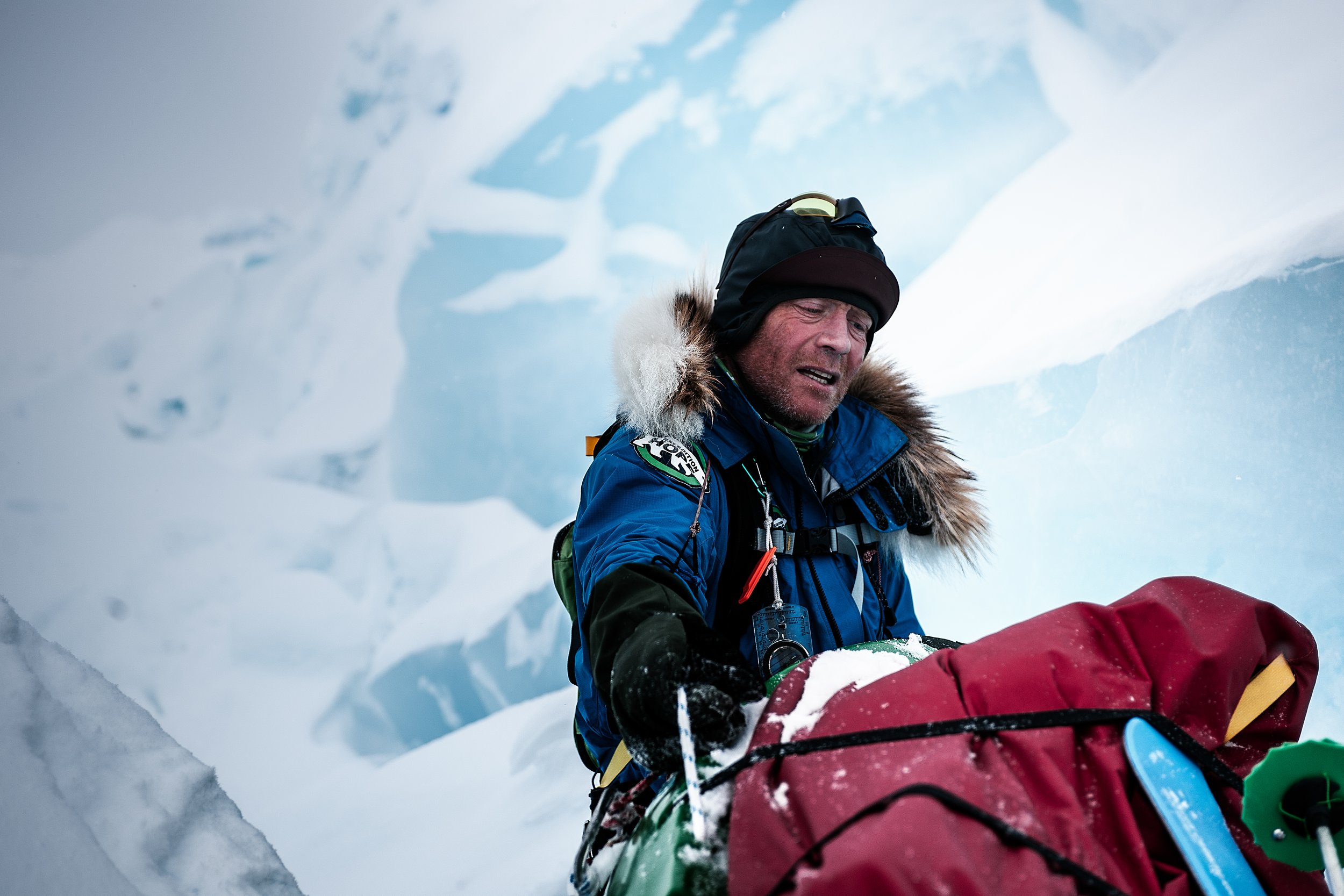Our aim is to give the Arctic Ocean a voice.
Right now, it is silent.

At the top of our planet, remains an unexplored area. It is remote, difficult to reach, a huge logistical and human challenge. Between Northern Greenland and Canada just a few hundred miles beneath the North Geographic Pole is hideout for the very last surviving pieces of the oldest ice in the Arctic. These cathedral-like monuments of sea ice, beautiful symbols of the once mighty Arctic, will soon be gone from our world, possibly forever. Now is the last opportunity we will have to observe, study, and fully document these unique and last examples of natures finest Polar creations, which are on the very sharp edge of extinction.
-
The small team of international Explorers, will set off on a 300-mile scientific journey from the most northerly point of land on Earth (Cape Oodaaq, Greenland), to traverse an exposed area of sea the frozen sea towards the most northerly point of Canada, in search of the last areas of the thickest ice remaining on the now fragile Arctic Ocean. The highly experienced team includes a navigator, a photographer, a scientist, a former Royal Marine, and a film maker. With the key aims to further our understanding of the critical role the Arctic Sea Ice plays in regulating our Earths Climate. And to help fill the knowledge gap that exists globally about this beautiful fragile environment, that has been hit harder than another place on earth by our warming climate.

Documenting The Last Remaining
Multi-Year Sea Ice
The Arctic Ocean is vital to your health, the world economy and it is the key influence to the health of the global food chain.
-
Right now, our planet is faced with huge environmental challenges addressing extreme and unpredictable weather patterns is undoubtedly the most urgent. At the core of this challenge lies the Arctic Ocean the only ocean on earth with a frozen skin of sea ice floating on its surface all year round. This frozen ocean is our planet’s one and only ‘air-conditioning system’.
In the past, the Arctic Ocean’s multi-year sea ice-covered an area of 5.4 million square miles. This white expanse reflected between 80% and 90% of the sun’s radiation safely back into outer space. However, this multi-year sea ice has almost gone. The Beaufort Sea has been transformed from a nursery for sea ice to a graveyard for older ice. Scientists believe It will be extinct from our planet within the next three years. If we don't attempt to document this area of our planet right now, it will be too late. We have very quickly and unexpectedly entered a new era where climate scientists have predicted that within the next 12 years we will feel the effects of a totally ice-free Arctic Ocean everywhere on Earth.
A warmer Arctic, with less sea ice, creates a sluggish and unusually wavy jet stream, leading to irregular weather patterns, most noticeably in the mid-latitudes, where most of the world’s food is grown. These irregular patterns will lead to food shortages, flooding, population displacement, increased CO2 emissions, and increased methane (a powerful greenhouse gas) release from the thawing Tundra.
The Last Ice Sentinels is a legacy project that aims to locate, track, measure, analyse, and photograph, to capture for everyone the last fragments of the rarest ice on earth.
Like the last surviving herd of an endangered species, these cathedral-like monuments of sea ice, beautiful symbols of the once mighty Arctic, will soon be gone from our world. Now is the last opportunity to record and preserve these majestic and unique natural ice sculptures, which we plan to undertake by launching a major scientific and photographic expedition, with the support of several International Scientific Agencies.



